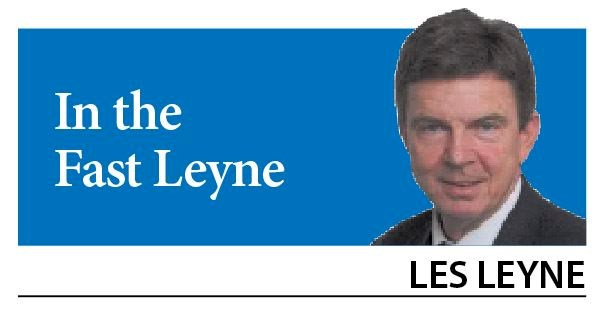In between all the interruptions, there were some glimmers of hard news during the leaders' debate on proportional representation on Thursday.
One development: Despite this being the third referendum in 13 years on changing the voting system, the idea won't necessarily die if this month's referendum vote defeats proportional representation.
Another referendum is already required if the current one passes. It will be held after two elections under whatever new system is picked, to confirm whether people accept the change.
But if this month's referendum fails, that might not be the end of the matter.
B.C. Liberal Leader Andrew Wilkinson committed to convening another citizens assembly to examine the voting system, if the circumstances arise.
He did it partly to avoid having to defend the main drawback of the current system - parties usually get majority control of the legislature with only a minority of the popular vote.
"Trying something new would be entirely appropriate, and that's why we've been saying it's time for another citizens assembly," he said.
"A citizens assembly would be a good idea."
He said it would produce a straightforward yes-no question that would be put on the ballot during a general election.
It wouldn't necessarily take a Liberal return to power for that to happen. Under certain circumstances, the NDP might endorse the idea, as well, in the event its campaign for proportional representation fails.
So why does B.C. have this recurring obsession with the voting system, to the point where there's a chance of four referendums over the course of six election cycles? Nobody else does this.
It's partly due to one outlier election result that started the ball rolling, and two subsequent ones that have maintained the idea's momentum.
The NDP won the 1996 election by six seats, even though it got 2.4 per cent (37,500) fewer votes that the B.C. Liberals. The losers were floored by that result. When they did finally gain power, they created the first citizens assembly, hoping for a system that would prevent that from happening.
The independent, randomly selected assembly of 161citizens arrived at a new idea, the single transferable vote. It was a theoretically viable idea that few understood, so it didn't pass the strict thresholds in a 2005 referendum. The vote was close enough that a second effort was ordered, and it failed outright on a second vote in 2009.
But the 2001 election that saw the Liberals elected was also important for a different reason.
They got more than 50 per cent of the vote, a first in B.C., but scooped 77 out of 79 seats.
It was a wildly disproportionate seat count, and the winners took full advantage of it. They even denied the two NDP MLAs the courtesy of party status. The house was dysfunctional for most of that term. The whole basis of parliament - no matter which voting system is used to assemble people - is the adversarial system. If there are almost no adversaries, it doesn't work right.
So for years afterward, the NDP stewed about a fluke election that almost wiped out the party.
The third election that drove the electoral reform agenda was the most recent one. For all the complaints about the current system's deficiencies, it produced a perfectly representative result.
People couldn't make up their minds. The popular vote was almost a dead heat. (With two million votes, Liberals got 1,667 more than the NDP). So there was only a two-seat difference in the count, and the electorate, in its wisdom, played a wild card.
Voters returned three B.C. Green Party MLAs, then sat back and let the players figure it out.
The first new party elected in decades had the balance of power, and one of its priorities was to cement its hold, by changing the rules to bring the seat count closer to the popular vote. That meshed with the NDP promise to change to proportional representation. The referendum currently underway is a product of that.
The other shred of news was Premier John Horgan's assurance that there would be more MLAs in the house under a new system.
That's not specified in the outlines provided, but it seems likely there will be as many as eight more MLAs.
The more seats created, the less wrenching the consolidation of ridings will be.
And the government wants to make the change as painless as possible.



